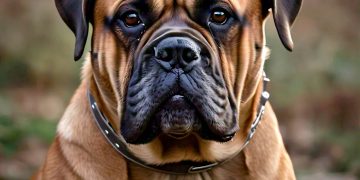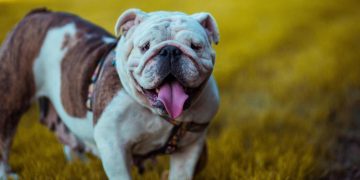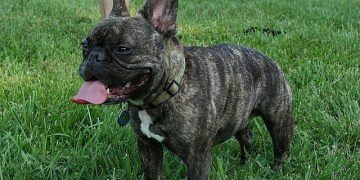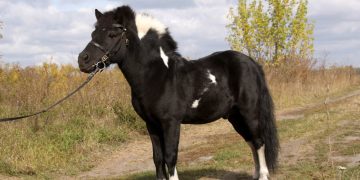Understanding the reproductive cycle of your dog is crucial for responsible pet ownership. One of the most common questions dog owners ask is, “How long does a dog stay in heat?” This article will provide an in-depth breakdown of the canine heat cycle, its stages, and how long each phase lasts. By the end, you’ll have a clear understanding of what to expect and how to care for your dog during this time.
What Does It Mean When a Dog Is in Heat?
When a dog is “in heat,” it means she is in the estrus phase of her reproductive cycle and is fertile, meaning she can become pregnant. This is a natural biological process that occurs in unspayed female dogs, typically starting between 6 and 24 months of age, depending on the breed and size of the dog.
The heat cycle, also known as the estrous cycle, consists of four stages: proestrus, estrus, diestrus, and anestrus. Each stage has distinct hormonal and physical changes that affect your dog’s behavior and physiology.
How Long Does a Dog Stay in Heat? Breaking Down the Stages
To answer the question, “How long does a dog stay in heat?” we need to examine each stage of the heat cycle. On average, the entire heat cycle lasts about 2 to 4 weeks, but this can vary depending on the individual dog.
1. Proestrus (7-10 Days)
- What Happens: This is the first stage of the heat cycle. During proestrus, your dog’s body prepares for potential pregnancy. Her ovaries begin to release eggs, and her estrogen levels rise.
- Physical Signs: You may notice swelling of the vulva and a bloody or reddish discharge. However, your dog is not yet ready to mate and may reject male dogs during this phase.
- Behavioral Changes: Your dog may become more restless or clingy. She might also urinate more frequently to mark her territory and attract males.
2. Estrus (5-9 Days)
- What Happens: This is the stage when your dog is fertile and receptive to mating. The discharge may change from bloody to a lighter, straw-colored fluid.
- Physical Signs: The vulva remains swollen, and your dog may “flag” her tail to the side when approached by a male dog.
- Behavioral Changes: Your dog will actively seek out male dogs and may become more affectionate or anxious. This is the phase most people refer to when asking, “How long does a dog stay in heat?”
3. Diestrus (60-90 Days)
- What Happens: If your dog has not become pregnant, her body will begin to return to its normal state. Progesterone levels rise and then fall, signaling the end of the fertile period.
- Physical Signs: The vulva swelling subsides, and the discharge stops.
- Behavioral Changes: Your dog will no longer be interested in mating and will return to her usual behavior.
4. Anestrus (2-4 Months)
- What Happens: This is the resting phase of the heat cycle. Your dog’s body is inactive reproductively, and no hormonal changes occur.
- Physical Signs: None. Your dog will appear completely normal.
- Behavioral Changes: None. This is the longest phase of the cycle.
How Often Do Dogs Go Into Heat?
The frequency of heat cycles varies by breed, size, and individual dog. On average, dogs go into heat every 6 to 8 months. Smaller breeds may cycle more frequently (every 4-6 months), while larger breeds may cycle less often (every 12-18 months).
Factors That Influence How Long a Dog Stays in Heat
Several factors can affect the duration and intensity of your dog’s heat cycle:
- Breed and Size: Smaller breeds tend to have shorter heat cycles, while larger breeds may experience longer ones.
- Age: Younger dogs may have irregular cycles until they reach maturity.
- Health and Nutrition: A dog’s overall health and diet can impact her reproductive cycle.
- Environment: Stress or changes in the environment can sometimes alter the timing of the heat cycle.
How to Care for a Dog in Heat
If your dog is in heat, it’s important to provide proper care to ensure her comfort and safety:
- Keep Her Indoors: To prevent unwanted pregnancies, keep your dog indoors and away from male dogs.
- Use Dog Diapers: Dog diapers can help manage the discharge and keep your home clean.
- Monitor Her Behavior: Watch for signs of discomfort or unusual behavior, such as excessive licking or lethargy.
- Consult Your Vet: If you have concerns about your dog’s heat cycle or are considering spaying, consult your veterinarian.
Spaying: A Long-Term Solution
If you do not plan to breed your dog, spaying is a highly recommended option. Spaying not only prevents unwanted pregnancies but also reduces the risk of certain health issues, such as mammary tumors and uterine infections. It also eliminates the heat cycle altogether, so you won’t have to worry about how long a dog stays in heat.
Frequently Asked Questions
1. Can a dog get pregnant the first time she goes into heat?
- Yes, a dog can get pregnant during her first heat cycle. It’s important to monitor her closely if you want to avoid pregnancy.
2. How can I tell if my dog is in heat?
- Look for signs like vulva swelling, bloody discharge, and changes in behavior, such as increased urination or restlessness.
3. Is it normal for a dog to skip a heat cycle?
- While uncommon, some dogs may skip a heat cycle due to stress, illness, or hormonal imbalances. If this happens, consult your vet.
4. How long does a dog stay in heat for the first time?
- The first heat cycle is typically similar in duration to subsequent cycles, lasting about 2-4 weeks.
Conclusion
So, how long does a dog stay in heat? On average, the fertile period (estrus) lasts about 5-9 days, but the entire heat cycle can span 2-4 weeks. Understanding your dog’s heat cycle is essential for providing proper care and making informed decisions about breeding or spaying.
By recognizing the signs and stages of the heat cycle, you can ensure your dog remains healthy and comfortable throughout this natural process. If you have any concerns or questions, always consult your veterinarian for personalized advice.

























